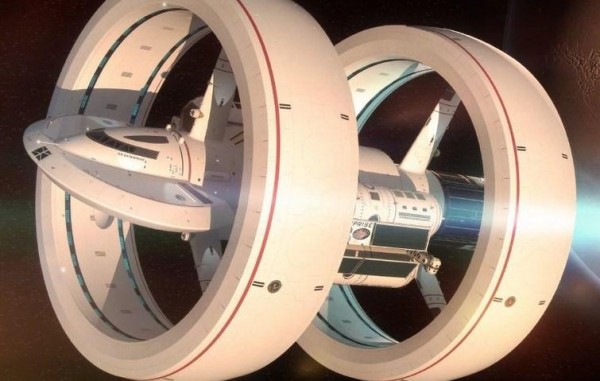Near Light Speed Travel Will be Deadly to Humans
| Arthur Dominic Villasanta | | Apr 10, 2015 12:04 PM EDT |
NASA's proposed starship
Space isn't empty and that fact alone makes traveling at near the speed of light not only impossible but downright deadly.
Raytheon engineers Ulvi Yurtsever and Steven Wilkinson said in a research paper that any spacecraft traveling at speeds approaching the speed of light will interact with the cosmic microwave background (CMB). This collision between the spacecraft and the CMB will create massive drag caused by cosmic microwave photons.
Like Us on Facebook
Cosmic microwave photons appear as highly energetic gamma rays at relativistic speeds or speeds approaching light speed. The researchers estimate that each cubic centimeter of space contains over 400 microwave photons.
A spacecraft traveling through space with a hull made from ordinary baryonic matter or ordinary matter will collide with billions upon billions of these photons every second. These non-stop collisions should create "electron-positron pairs" that will produce excessive drag on a starship.
This drag in the order of 10^14 Joules per second will tax a spacecraft's engines just to keep it at a constant velocity. Yurtsever and Wilkinson said it would be prudent to keep the spacecraft's velocity below the threshold for electron-positron pair creation to reduce the drag to a negligible level of just a few joules per second.
This threshold occurs when the spacecraft reaches a velocity that is 1 - 3.3 x10^-(17) of the speed of light.
"In general one can imagine the same interactions that occur in a particle accelerator to occur between relativistic spacecraft and interstellar matter," they wrote in their study.
Apart from this drag, the effect of an object hitting the hull at high speeds would be deadly. For a ship traveling near the speed of light, the collision with a single cosmic dust grain with a mass of 10^-(14) grams will release 10,000 megajoules of energy.
That's the same amount of energy released by the explosion of 2,400 kilograms of TNT. That's just a single grain of dust and space is full of dust.
"Our assumption that matter-matter interactions can be dealt with when civilization can build relativistic spacecraft may prove false and may be a barrier that will prevent space travel (at relativistic speeds)," write the engineers.
But there's an upside to this phenomenon. This fact will allow us to detect alien starships using today's technology when they're a long, long way off.
©2015 Chinatopix All rights reserved. Do not reproduce without permission
EDITOR'S PICKS
-

Did the Trump administration just announce plans for a trade war with ‘hostile’ China and Russia?
-

US Senate passes Taiwan travel bill slammed by China
-

As Yan Sihong’s family grieves, here are other Chinese students who went missing abroad. Some have never been found
-

Beijing blasts Western critics who ‘smear China’ with the term sharp power
-

China Envoy Seeks to Defuse Tensions With U.S. as a Trade War Brews
-

Singapore's Deputy PM Provides Bitcoin Vote of Confidence Amid China's Blanket Bans
-

China warns investors over risks in overseas virtual currency trading
-

Chinese government most trustworthy: survey
-

Kashima Antlers On Course For Back-To-Back Titles
MOST POPULAR
LATEST NEWS
Zhou Yongkang: China's Former Security Chief Sentenced to Life in Prison

China's former Chief of the Ministry of Public Security, Zhou Yongkang, has been given a life sentence after he was found guilty of abusing his office, bribery and deliberately ... Full Article
TRENDING STORY

China Pork Prices Expected to Stabilize As The Supplies Recover

Elephone P9000 Smartphone is now on Sale on Amazon India

There's a Big Chance Cliffhangers Won't Still Be Resolved When Grey's Anatomy Season 13 Returns

Supreme Court Ruled on Samsung vs Apple Dispute for Patent Infringement

Microsoft Surface Pro 5 Rumors and Release Date: What is the Latest?










